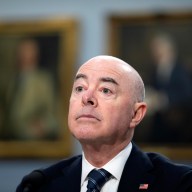By Jessica Resnick-Ault
NEW YORK (Reuters) – Oil prices jumped more than 2 percent on Friday as Saudi Arabia and other producers in OPEC, as well as allies like Russia, agreed to reduce output to drain global fuel inventories and support the market.
The Organization of the Petroleum Exporting Countries and its Russia-led allies, referred to as “OPEC+,” agreed to slash production by a combined 1.2 million barrels per day from 2019. This was larger than the minimum 1 million bpd that the market had expected, despite pressure from U.S. President Donald Trump to reduce the price of crude.
OPEC will curb output by 800,000 bpd from January while non-OPEC allies contribute an additional 400,000 bpd of cuts, Iraqi Oil Minister Thamer Ghadhban said after the organization concluded two days of talks in Vienna.
Russian Energy Minister Alexander Novak confirmed the combined output cuts of 1.2 million bpd, saying the market would be oversupplied through the first half of the year.
Brent crude rose $1.64, or 2.9 percent, to $61.70 a barrel by 1:46 p.m. EDT (1746 GMT). In early trading, the global benchmark had dropped below $60 when it looked as if oil exporters might leave output targets unchanged. It then rallied to a session high of $63.73 on news of the agreement.
U.S. crude rose $1.10 to $52.59 a barrel, after earlier reaching a session high of $54.22.
U.S. crude was on track to end the week up 3.7 percent and Brent was 5.4 percent higher on the week so far.
“Without cuts there would have been extreme downward pressure on the market,” said John Paisie, executive vice president at Stratas Advisors, a consultancy. “I think the Saudis tried to walk a tightrope: they want to make sure they maintain their relationship with the U.S., but they also need to make some cuts because they need a higher oil price to balance their budget.”
A 1.2 million-bpd cut, if implemented fully, “should be enough to largely attenuate, but not eliminate, expected implied global inventory builds in the first half of next year,” Harry Tchilinguirian, global oil strategist at BNP Paribas in London told the Reuters Global Oil Forum.
Oil prices have plunged 30 percent since October as supply has surged and global demand growth has weakened.
Prices fell almost 3 percent on Thursday after OPEC ended a meeting in Vienna with only a tentative deal to tackle weak prices. Talks with other producers were held on Friday.
But Iran gave OPEC the green light Friday to reduce oil output after finding a compromise with rival Saudi Arabia over a possible exemption from the cuts, an OPEC source said.
Output from the world’s biggest producers – OPEC, Russia and the United States – has increased by 3.3 million bpd since the end of 2017 to 56.38 million bpd, meeting almost 60 percent of global consumption.
The surge is mainly due to soaring U.S. oil production, which has jumped by 2.5 million bpd since early 2016 to a record 11.7 million bpd, making the United States the world’s biggest producer.
U.S. drillers this week cut oil rigs by the most in over two years, after adding rigs in recent weeks. Energy companies cut 10 oil rigs in the week to Dec. 7, the biggest weekly decline since May 2016, bringing the total count down to 877, General Electric Co’s Baker Hughes energy services firm said in its closely followed report on Friday. Rig count is an indicator of future production. Still, the number of rigs remains up from a year ago.
Given supply due to come online, some analysts and market participants said the cut may not be sufficient to end oil’s rout.
“Relative to how big this looming supply tsunami is, it is not nearly enough to prevent big inventory builds next year,” said Robert McNally, president of Rapidan Energy Group in Washington. “President Trump and President Putin prevented OPEC+ from cutting by more, which was certainly needed to put a sturdy floor under prices. They are putting a fuzzy floor under prices.”
Trump has asked OPEC to keep prices low, pleading with the Saudis in twitter messages. Russia had initially balked at cutting production alongside OPEC.
(Graphic: OPEC, Russia & U.S. crude oil production – https://tmsnrt.rs/2QdhkVc)
(Graphic: U.S. turns into net exporter of oil – https://tmsnrt.rs/2QiW7cA)
(Additional Reporting by Julia Payne and Christopher Johnson in London and Henning Gloystein in Singapore; Editing by Marguerita Choy and Bernadette Baum)
















